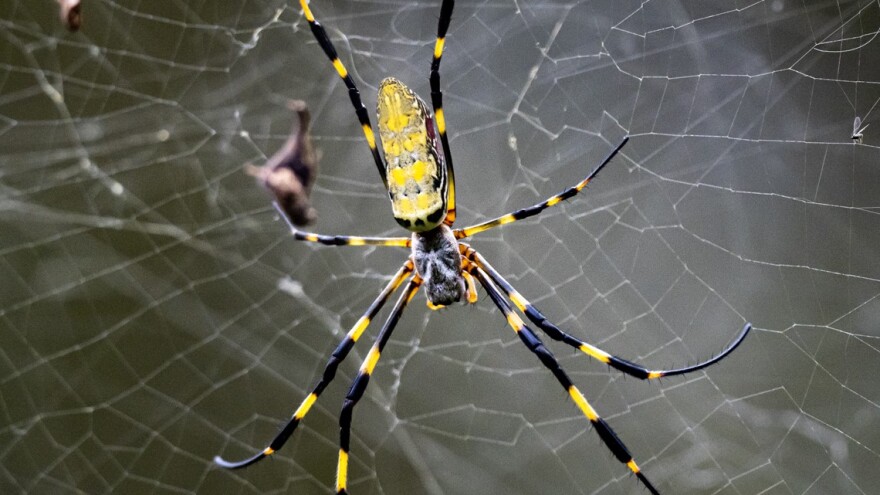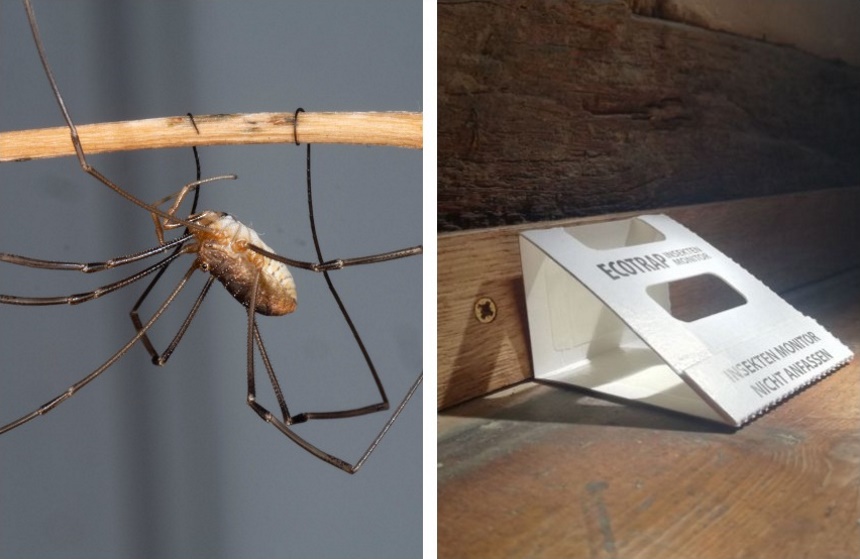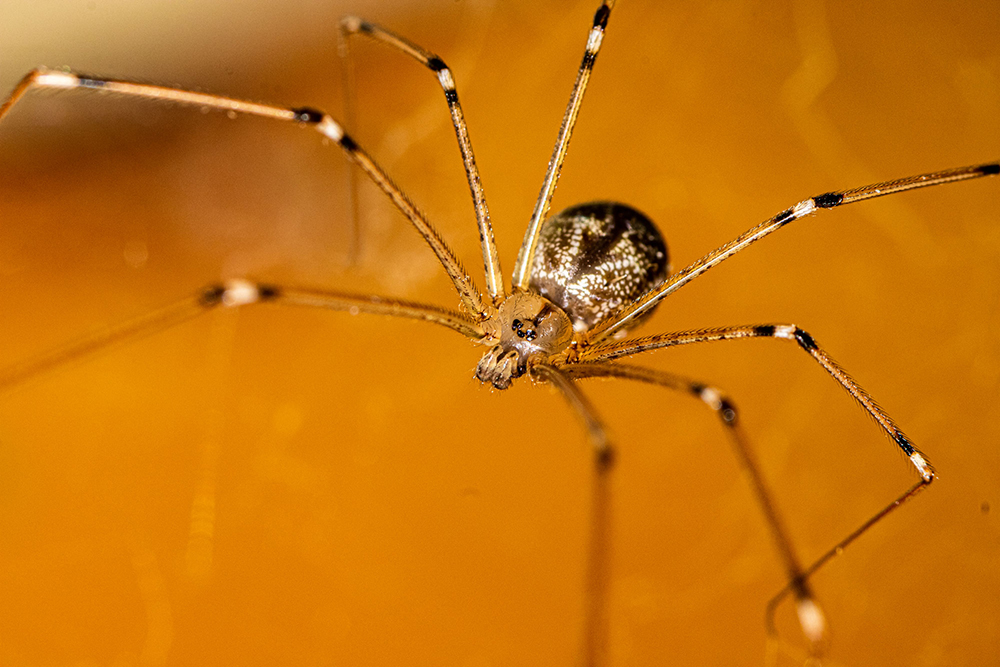

Have you ever noticed that you don’t see nearly as many spiders throughout the winter as you do in the summer? While spiders don’t technically hibernate, they certainly prefer warmer weather when it’s available. In the wintertime, it always seems like your home and even the outdoors are mostly free of spiders, giving you the false impression that they’ve gone away or are hibernating for the season.
But where do spiders go in the winter? The truth is they are still there but they likely have found places to cozy up and try to stay warm. Freezing temperatures likely won’t scare them away completely. You might even be surprised that some spiders have learned how to survive the winters just fine.
Their bodies and means to live are phenomenal when you think about it. Keep reading to learn more about just what happens to spiders during the cold winter months.
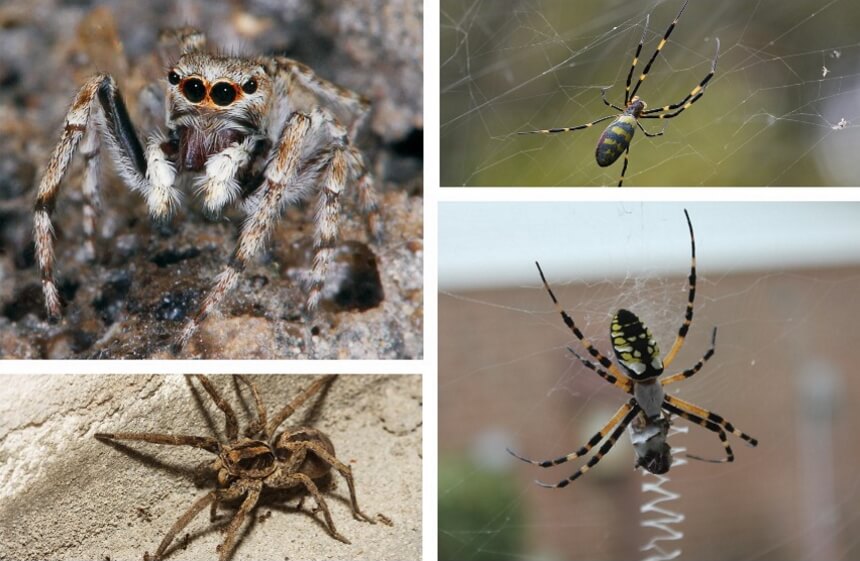
Spiders have unique bodies that allow them to transition and survive in the winter months. It is true that they prefer warmth. You might see less of them in the winter while they look for places to stay warm. However, they also have bodies that allow them to adapt to winter temperatures and survive those cold months without a hitch.
Certainly, there are some spiders that will die or stay hidden away as much as possible in the winter. As long as a spider can find protection from things like frost and ice, they have a high probability of making it through the winter months.
Let’s consider a few different types of spiders.
Where do joro spiders go in the winter? These spiders will hide away in sacs that look like or are egg sacs. They don’t handle the cold nearly as well but can likely survive one or two short freezes. Joro spiders definitely prefer heat, warmth, and humidity. You probably won’t see them during cold months as they will move around or hide away to stay warm.
If you’re wondering where do jumping spiders go in the winter, look no further. These spiders are primarily hibernators, although they will still need to be able to feed in the winter. They will likely take up residence and burrow into the ground or grass and create a silken place to keep them warm.
Next up, where do wolf spiders go in the winter? These spiders like to burrow and that is where they live year-round. In the winter, their burrows help to keep them warm. This spider can go much longer without feeding so they might hide most of the winter. If you have a pet wolf spider, be sure to stock on mealworms or food and provide them somewhere they can burrow or create a nest to stay warm.
Our final example is where do banana spiders go in the winter. If we’re being honest, these spiders will likely find places to stay where they won’t see harsh winters. They like heat and naturally live in places that are warm, humid, and not likely to threaten their comfort with excessive cold.
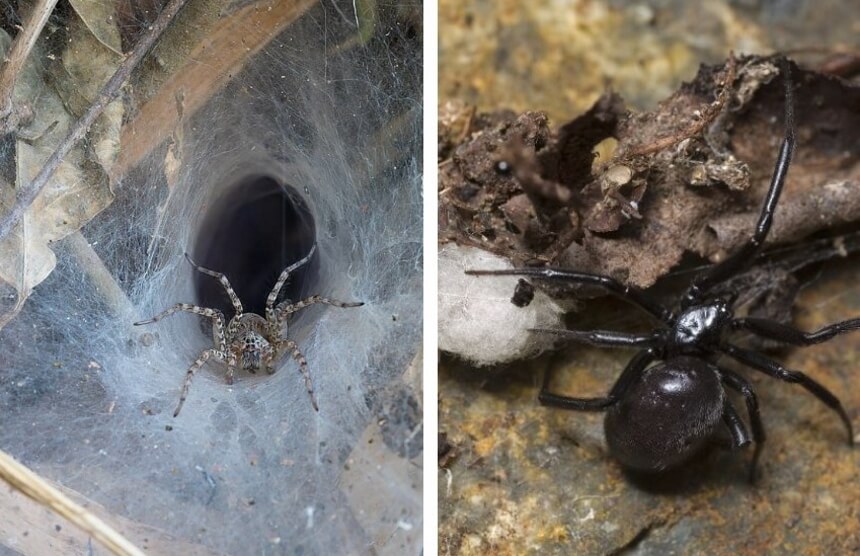
Most spiders utilize their resources to find locations where they can stay warm. Some spiders will eat well before winter comes so they can last as long as possible without needing to come out. Each species has their own unique way to stay warm through the winter, even if it means migrating for a season.
Here are some common places a spider will live in the wintertime.
Most types of spiders do build nests. The truth is that you may not ever see these nests because they like them to be safe and secluded for their own protection. Spiders tend to build their nests in places that are hidden and will provide them with the things they need like food and water. They don’t want to be disturbed.
In the winter, they will use these nests to protect themselves from the cold. Most nests are made from their silky webs in some way but there are spiders that add to their nests with other things too.
Remember how we said the spider’s body is uniquely built to help protect them through the winter? They have a unique exoskeleton that layers around their sensitive areas to give them protection from cold weather.
In addition to their bodily provisions, spiders are going to look for areas that will protect and insulate them from the cold. This is when many spiders start looking for hiding spaces that are warm or perhaps even burrow and tunnel for a place to stay warm.
Over time, the body of a spider will evolve to protect them in the winter. This is referred to as natural antifreeze and it truly is like antifreeze. As the days get colder, their bodies pick up on the need to stay warm and produce a chemical that works exactly like the antifreeze in your car.
The chemical shoots through their blood and ultimately warms them from the inside out. That added warmth prevents ice crystals from forming on the spider and protects them from the cold.
While many people assume that spiders hibernate, this is not really the case. What happens is spiders find a place to hunker down and stay warm. However, they are smart about finding a location where they can be warm but still have access to food and water when needed.
They can slightly hibernate as they don’t need food every single day to survive. Most spiders can live a month or two, carrying them through the coldest days while they just hide away to stay warm.
Spiders do prefer warmer weather and they like moisture and humidity. For that reason, you are likely to start seeing more spiders as the temperatures are consistently warmer. There is no set date and it really depends on what the temperatures are like.
The experts say that when days are consistently 40 degrees and above, spiders start appearing more and coming out of their winter hidey holes.

If you’re going to see spiders in the winter, it’s most likely going to be inside when they’re looking for someplace warm to hide. You can protect your home from spiders through many different tools. You simply need to know what they are.
You can use something like traps, foggers, or even sprays to help with this. Here are some references for you to consider.
You can trap spiders with different types of traps. If you would rather fog your home and try to deter and kill spiders on a larger scale, these are some of the best foggers for spiders you can find. And finally, you can build a secure perimeter on the outside of your home with these best outdoor spider sprays.
These solutions all work fairly well. If you prefer a more natural approach, you can try something like peppermint oil to help deter spiders. They are also repelled by hedge apples if you have any of those lying around.
Are you wondering where do spiders go in the winter? Spiders don’t really hibernate but they are able to hide away for long periods of time and just come out on moderately warmer days to feed as needed. They can go extended periods of time without food, allowing them to hide where it’s warm and cozy during the cold months.

